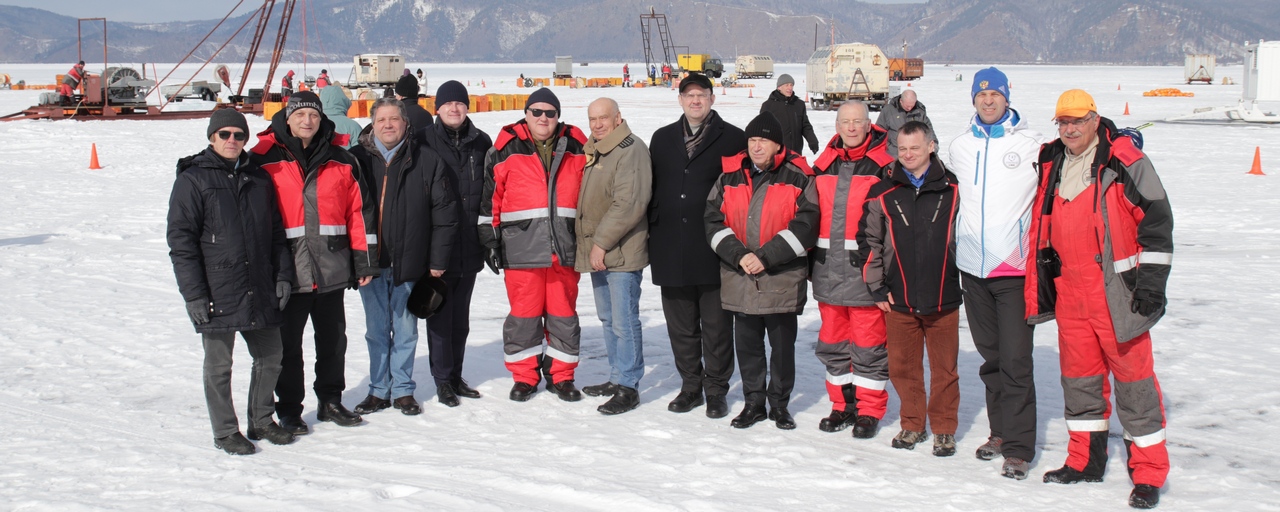Valery Falkov, head of the Ministry of Education and Science of Russia, held a videoconference meeting on the development of the Baikal deep underwater neutrino telescope Baikal-GVD. It was attended by heads of scientific and educational organizations, as well as scientists who conduct research on the “megasience” class installation.
The participants discussed in detail the progress of work on the construction of the installation, the results of research and plans for further development of the project. The interim results of the current expedition, during which the scientific team plans to install two new clusters of optical modules, were also considered.
“Today, within the framework of state policy, on the one hand, we focus on applied research and development. It is clear that specific results of science and technology in general are in great demand in the economy today. On the other hand, and Russian President Vladimir Putin has repeatedly said this, in no case should fundamental research be pushed to the periphery. We need to be very careful about the groundwork that exists, and invest, support and help,” said Valery Falkov, head of the Russian Ministry of Education and Science.
According to the Minister, for the research of neutrinos and particle astrophysics in 2022-2024, the Ministry of Education and Science of Russia allocated 18 million rubles annually to six scientific and educational organizations within the framework of the state task.
Grigory Trubnikov, director of the Joint Institute for Nuclear Research (Dubna), reported that more than 60 people take part in research on the telescope, about 30 are constantly on the ice of Lake Baikal.
Nine scientific and educational organizations have also joined forces to work on the telescope — these are the Joint Institute for Nuclear Research (JINR), the Institute for Nuclear Research of the Russian Academy of Sciences (INR RAS), Irkutsk State University (ISU), the Skobeltsin Institute of Nuclear Physics (SINP MSU), Nizhny Novgorod State Technical University, St. Petersburg State Marine Technical University, Czech Technical University, Alma-Ata Institute of Nuclear Physics.
According to Grigory Trubnikov, a network of advanced physical installations, such as Baikal-GVD, can serve Russia to retain unique human capital. At the same time, in order to be a serious competitor on a global scale, in order to get into the top five world leaders in the field of science, Russia needs the participation of international partners in its mega-science projects.
“There is interest from China, Latin America, and European countries. Two effective channels for involving partners in joint projects are collaboration, which is formed together by scientific organizations under the coordination of JINR — the International Scientific Center in Dubna and the state program “Priority 2030”, which allows Russian universities to actively build international cooperation,” the JINR Director stressed.
In 2022, the scientific collaboration “Baikal” installed another two Baikal-GVD clusters. There are 10 active clusters in total, plus an incomplete cluster that consists of two strings with optical communication lines installed to conduct research on improving the efficiency of the neutrino telescope. The effective volume of the telescope exceeded 0.4 km3 in the task of registering cascading events from high-energy neutrinos.
Plans for the development of a mega-science installation and research on it were announced at the meeting as well: by 2030, it is planned to install another 8-10 clusters, which will ensure the registration of astrophysical high-energy neutrinos with an effective volume of up to 1 km3. This will allow Baikal-GVD to compete with IceCube (USA), KM3NeT (EU) projects and projects developing in China and Canada.
Furthermore, it is planned to develop microbiological studies of the Lake Baikal benthos communities with the use of genetic analysis methods of JINR and the Limnological Institute of the Siberian Branch of the Russian Academy of Sciences.
















